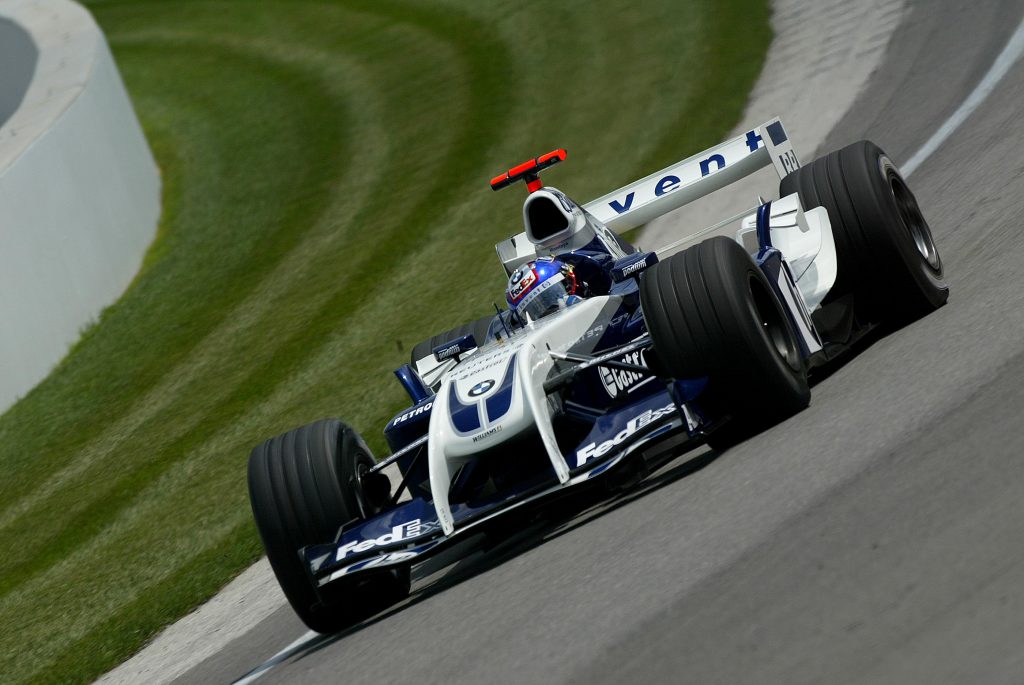Up Next

Formula 1 pre-season is a time of great anticipation for teams, drivers and fans.
While those on the outside often have to wait a little bit longer to find out which new cars are any good and who has dropped the ball, teams often know within a matter of laps how their year is shaping up.
As we start getting our first glimpses of the class of 2020, here is a look at 10 cars that failed to live up to their lofty expectations.
Number 10 – Benetton B196, 1996
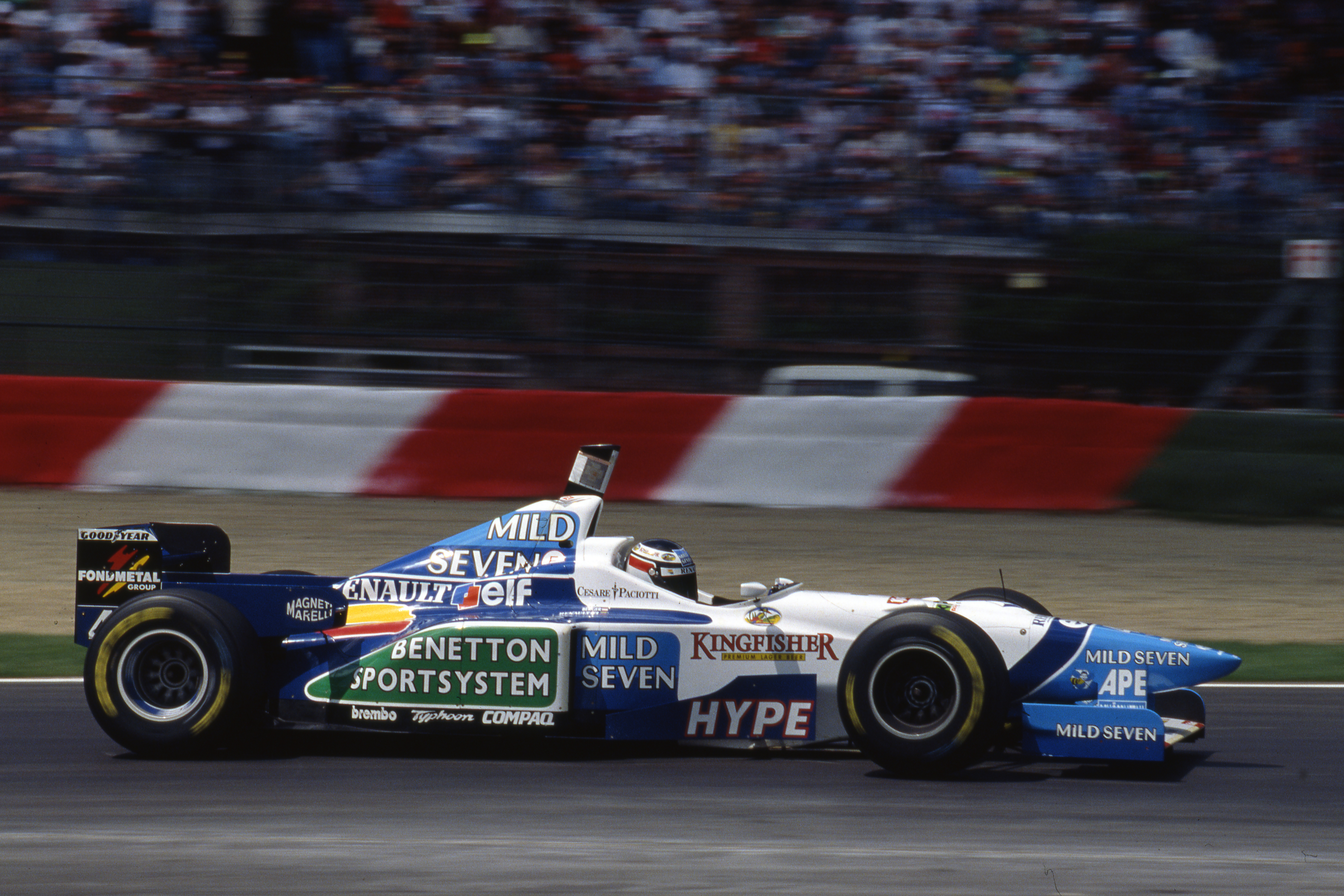
The Benetton B196 wasn’t a terrible car – the team took 10 podiums with Jean Alesi and Gerhard Berger, and narrowly missed out on second in the constructors’ championship to Ferrari.
But it goes down as a disappointment because Benetton had won the previous two drivers’ world championships with Michael Schumacher, and in 1995 it won 11 out of 17 races en route to its first constructors’ crown. To follow that up with no wins was a huge step down.
There’s a theory among those at Benetton at the time that the 1996 car was just as good as the B195 that took Schumacher to a dominant second title, and Schumacher has even said that he reckoned a third championship was on the cards if he stayed.
Ross Brawn said in his book that Flavio Briatore’s decision to bring Berger over from Ferrari along with Alesi, who had been signed up first, caused friction. The drivers did not have a good relationship from their three years together in red, and they often gave different feedback about the car.
Brawn believes Benetton “had several races we should have won” in 1996, and he puts the failure to pick up a single victory for the first time since 1988 down to the drivers and poor reliability, rather than the B196 being a bad car.
The most obvious race Benetton should have won that year was the German Grand Prix, where Berger and Alesi ran first and second for the first half of the race, and Berger’s engine blew up three laps from home when he was leading narrowly from Damon Hill’s Williams.
But Berger was a Hockenheim specialist, winning there for Ferrari in 1994 and making up for his ’96 heartbreak by taking Benetton’s final victory a year later.
Number 9 – Mercedes MGP 001, 2010
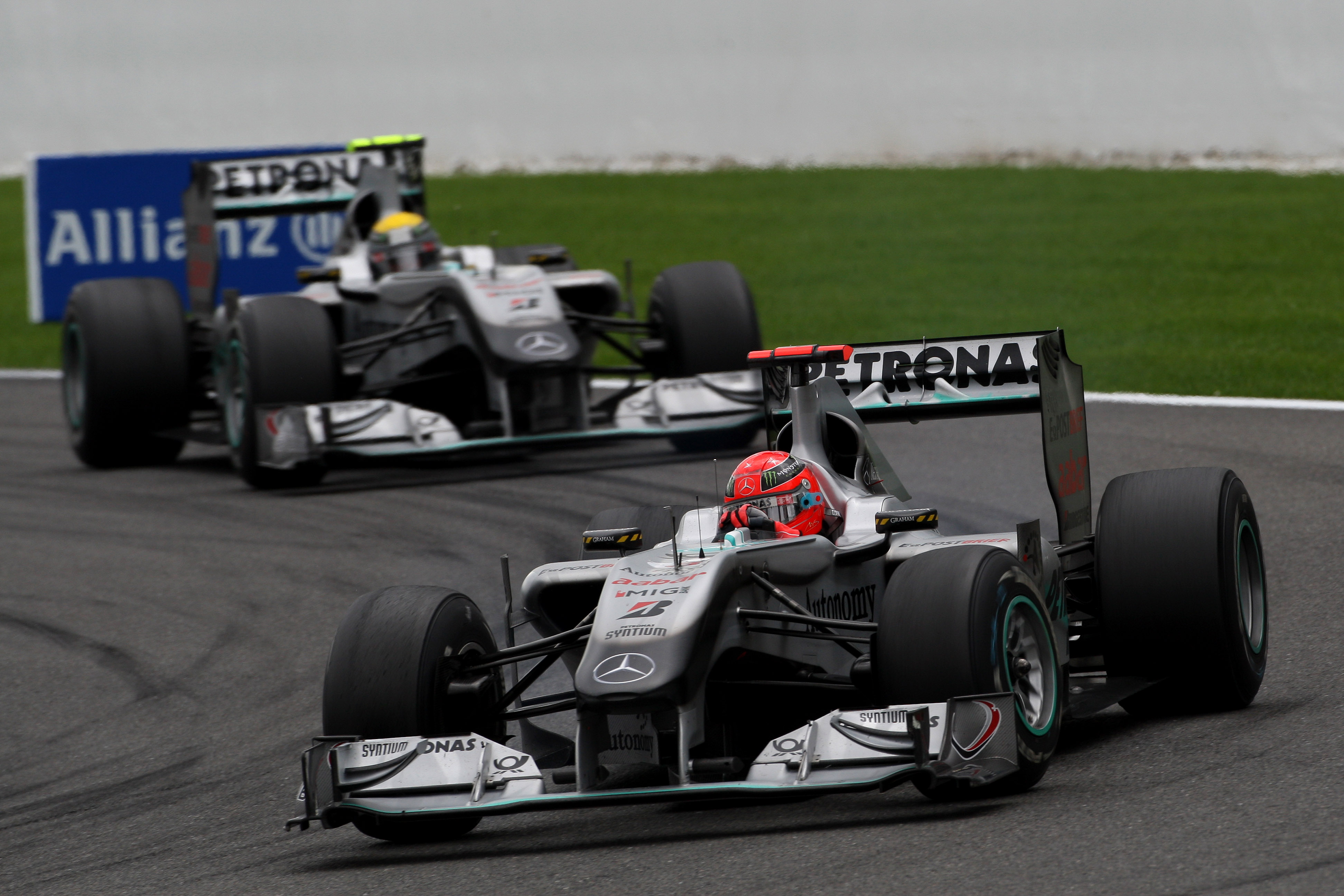
Mercedes thought it had a golden (or should that be silver?) ticket when it pounced on the opportunity to buy Brawn GP after the ex-Honda team had just won both world championships in 2009.
But while it got a good deal, it inherited a car for 2010 that was desperately underdeveloped.
Brawn had struggled to keep up with the pace of the other top teams over the course of 2009 as money got tight, and in making sure it got over the line with Jenson Button to win the championship, the following year’s car received very little investment.
While that might have come as a surprise to some at Mercedes, there were those inside the team – including Brawn himself – who knew that 2010 was going to be a struggle.
What would have been the BGP 002 became the Mercedes MGP W01, and expectations spiralled even further out of control when Michael Schumacher was coaxed out of retirement to drive for Mercedes for the first time since his sportscar career.
Mercedes was a low-key fourth in the constructors’ championship that year, failing to win a race and only scoring three podiums – all of which came from Nico Rosberg.
Number 8 – Ferrari 642/643, 1991
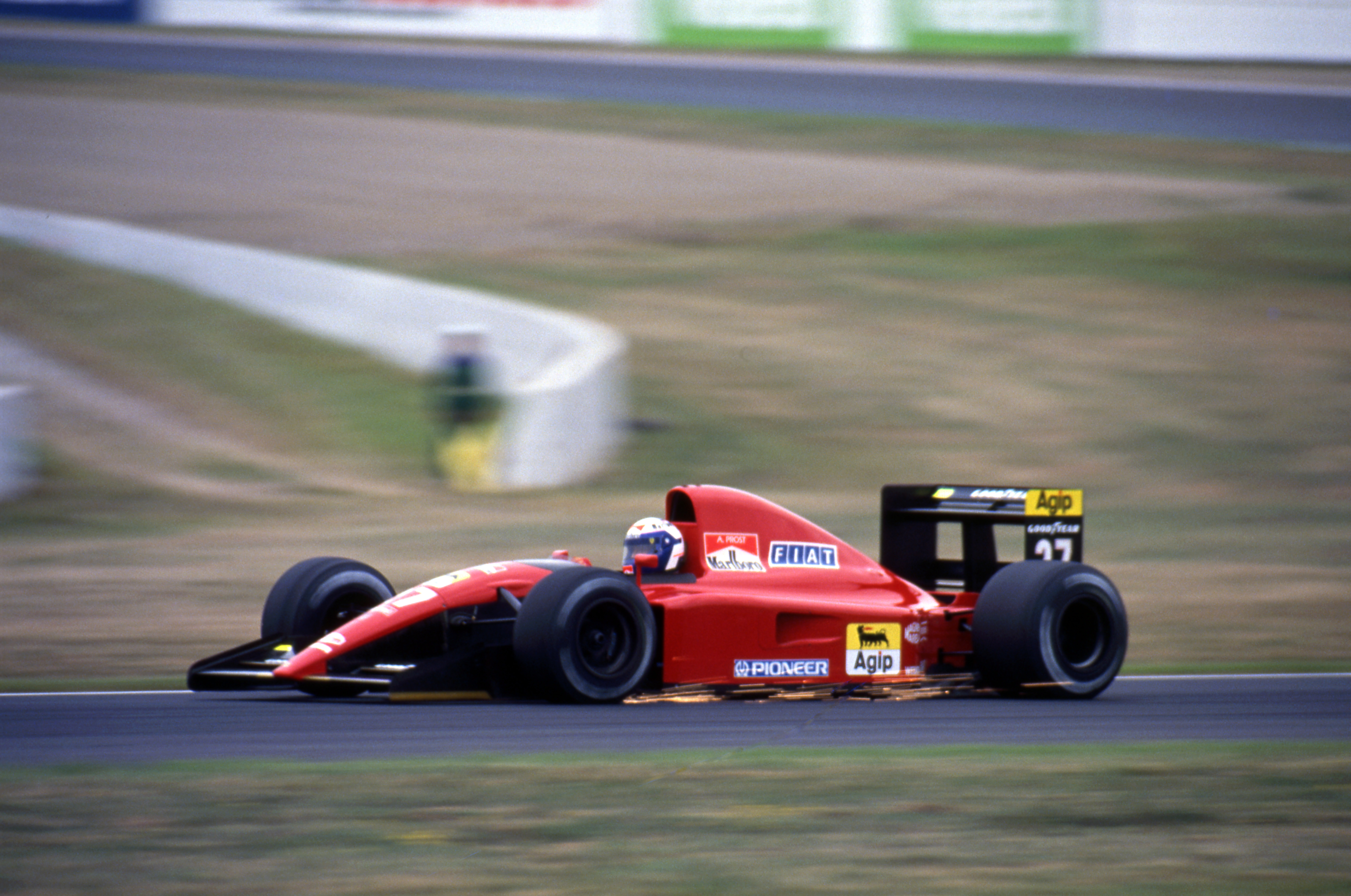
Ferrari and Alain Prost went into 1991 as the pre-season favourites after narrowly missing out in controversial fashion to Ayrton Senna and McLaren in 1990.
Ferrari wasn’t expected to start the year with a new car as it worked on a major redesign to be introduced mid-season, but it sparked surprise by revealing its 642 in pre-season testing.
The front half of the car was effectively the same as 1990’s gorgeous 641, but several elements behind the driver were overhauled.
With McLaren’s new V12 engine expected to take some time to get up to speed for ’91, Williams struggling for reliability with its new semi-automatic gearbox, and Benetton delaying the introduction of its new car, Ferrari believed the hype as the media tipped Prost to win the title.
Prost wasn’t so sure. Ferrari had pushed back work on its 1991 car to keep developing the 1990 contender as he fought Senna for the title, and Prost feared it had rested on its laurels in the belief that the competition would be starting ’91 on the back foot.
The part-redesigned Ferrari was no match for McLaren or Williams at the start of the year, and despite a promising debut for the full 1991 car at the French GP, where Prost led 44 laps before falling to second behind Nigel Mansell, that was as good as it would get.
Prost failed to win a race, finished a distant fifth in the championship, and was fired before the season finale in Australia after falling out with Ferrari management. Perhaps Ferrari did him a favour, because its 1992 car was even worse.
Number 7 – Lotus 100T, 1988
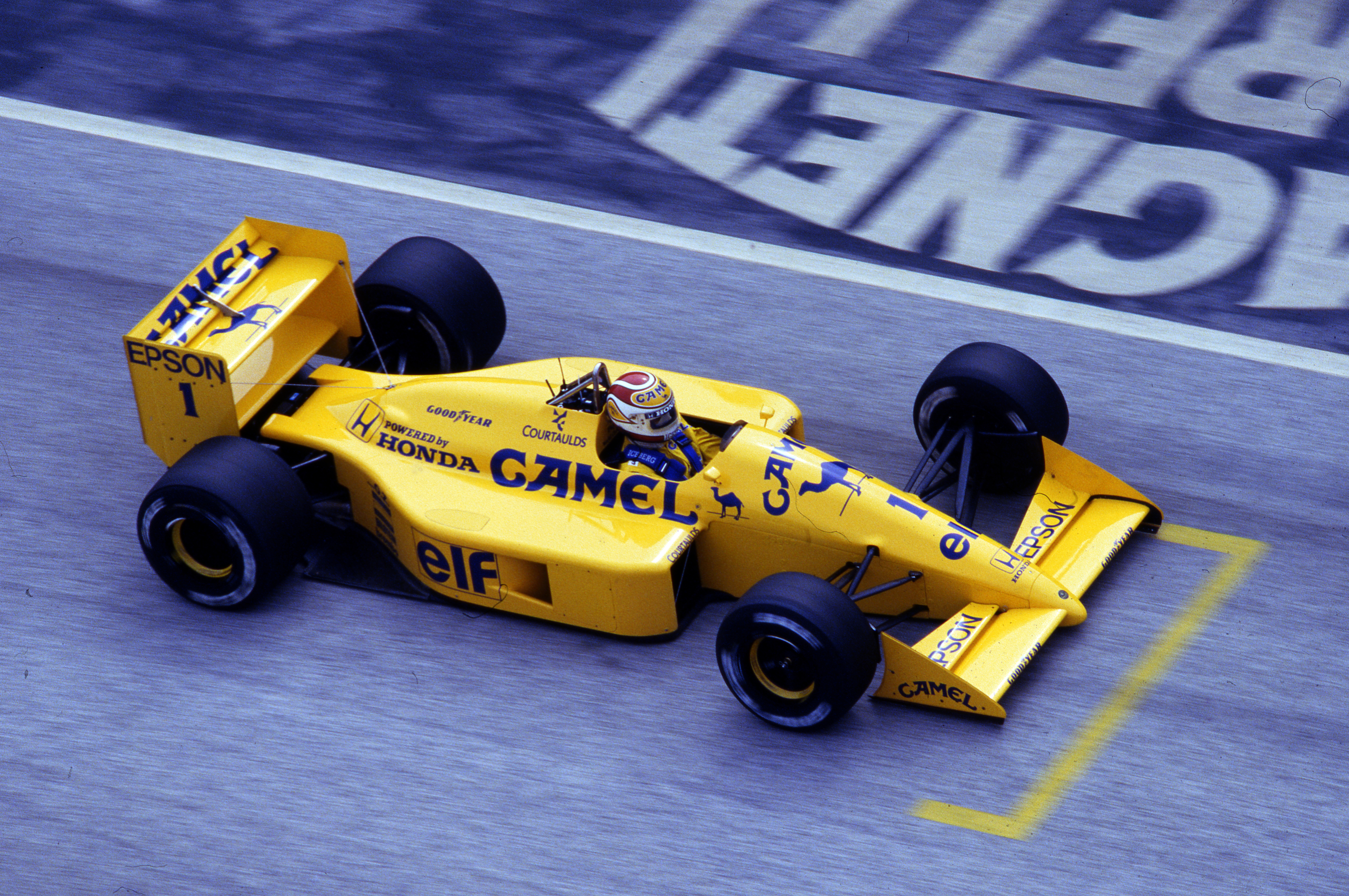
Lotus hadn’t added to its tally of world championships through the 1980s, but by the end of 1987 it had eight wins to its name in the decade.
For 1988 Ayrton Senna – winner of six of those grands prix – was off to McLaren, but reigning world champion Nelson Piquet was taking his place.
But the 100T chassis was a letdown. Despite using the same Honda engine that dominated the year in the back of the iconic McLaren MP4/4, Lotus’s design compromised the performance of the Japanese unit, and the chassis wasn’t up to the task of controlling the impressive power output.
Piquet claimed three podiums – the last the team would score before closing at the end of 1994 – and despite Lotus finishing fourth in the constructors’ championship its points tally of 23 was a big step down from the 64 it scored in Senna’s final season.
The 100T was the car that sent Lotus heading for the doldrums.
Number 6 – Toyota TF102, 2002
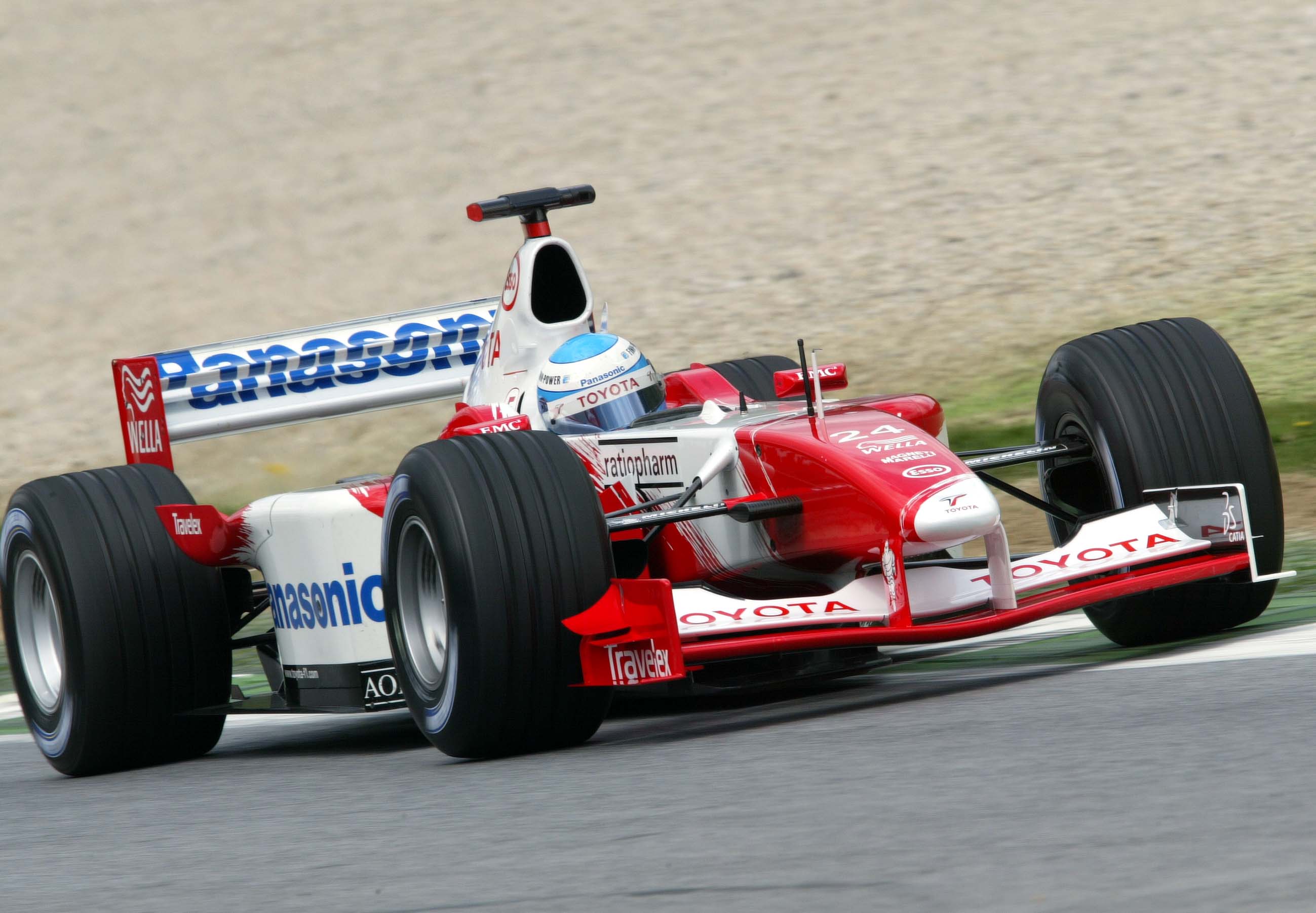
Toyota spent a year testing before entering F1 in 2002, but huge investment from Japan and a long time to prepare weren’t enough to spare its blushes in its first season.
It scored points on its debut in Australian Grand Prix, but that was a fortunate result after the race-start pile-up that eliminated most of the field.
Perhaps more telling was Mika Salo’s failure to overtake Mark Webber’s Minardi in their battle for fifth place, with the Finn spinning when attacking Webber two laps from the end.
Toyota’s only other point of the season came in round three at Interlagos, and as the year progressed it struggled to keep up in the development race.
It was 10th in the constructors’ standings in its first season, only finishing ahead of Arrows, which didn’t complete the full campaign.
The conservative TF102 was on average the seventh fastest car during the season. Fittingly, that put Toyota between BAR and Jaguar on pace – two other big-budget teams whose first cars (in 1999 and 2000 respectively) could have made it onto this list.
Number 5 – McLaren MP4-30, 2015

McLaren was supposed to be heading back to the big time when it reunited with Honda five years ago. Instead this was the beginning of a painful three-year journey that would eventually lead to an expensive separation.
Honda joined F1’s V6 hybrid engine era a year after its rivals, but it was woefully under-prepared, struggling for power and reliability.
McLaren’s line-up of world champions Fernando Alonso and Jenson Button could do nothing to overcome the problems.
McLaren claimed that the MP4-30 was a very good chassis being held back by a bad engine, and even if that debatable claim was true, it wasn’t enough to stop McLaren slumping to a humiliating ninth in the constructors’ championship, above only the point-less Manor Marussia team.
Number 4 – Williams FW26, 2004
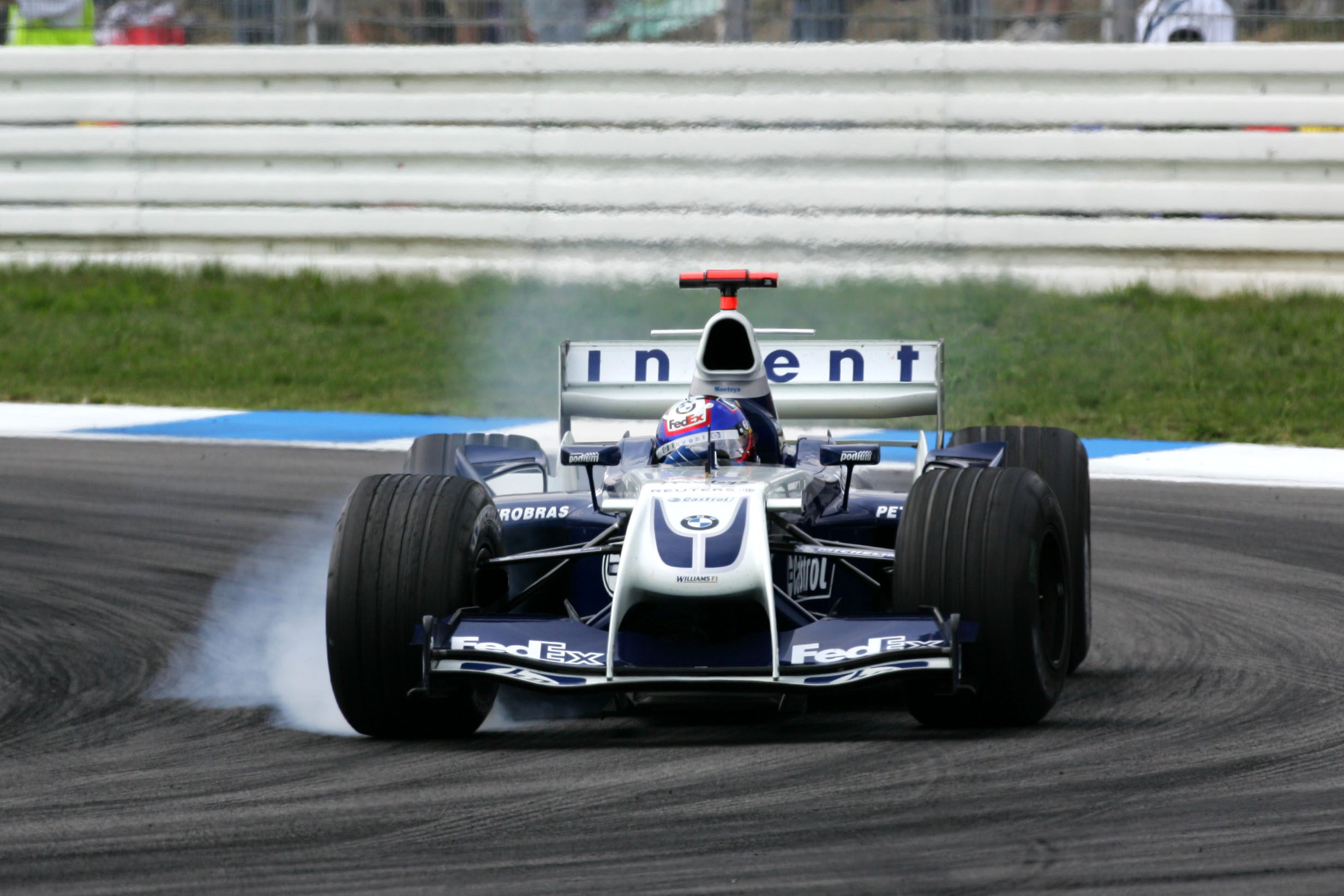
Williams fought Ferrari and McLaren for the world championship in 2003, but its radical walrus-nosed FW26 failed to build on that.
The idea of the design was to remove any interference with the airflow around the front wing caused by the nose of the car, and Williams believed doing this would increase downforce and reduce drag. The team accepted the design was ugly, but the hope was it would be fast enough that everyone could look past the appearance. It wasn’t.
At the launch of the car Patrick Head said one of the main challenges was beefing the front-end up enough to pass the mandatory crash tests. Achieving the strength required to pass those tests meant increasing the weight in that area, compromising the performance and weight distribution of the car.
Head also said he couldn’t understand why nobody had tried the nose design before, and after the Williams was revealed several rival teams said they would be evaluating the concept. The speed of the Williams, and the fact it never turned up elsewhere on the grid, would suggest that it wasn’t as good an idea as first thought.
As the team struggled in the first half of the year, Frank Williams declared the 2004 car faster than its predecessor but not enough of a step to compete with Ferrari’s dominant F2004, plus the gains made by BAR, Renault and McLaren – which also struggled with the first iteration of its MP4-19.
Williams switched back to a more conventional nose for the Hungarian Grand Prix, adding 41 points in the final six races of the year to the 47 it scored across the first 12. It signed off the season with Juan Pablo Montoya winning the season finale in Brazil, which would be the team’s final victory until Pastor Maldonado’s surprise success in the 2012 Spanish GP.
Number 3 – Honda RA107, 2007
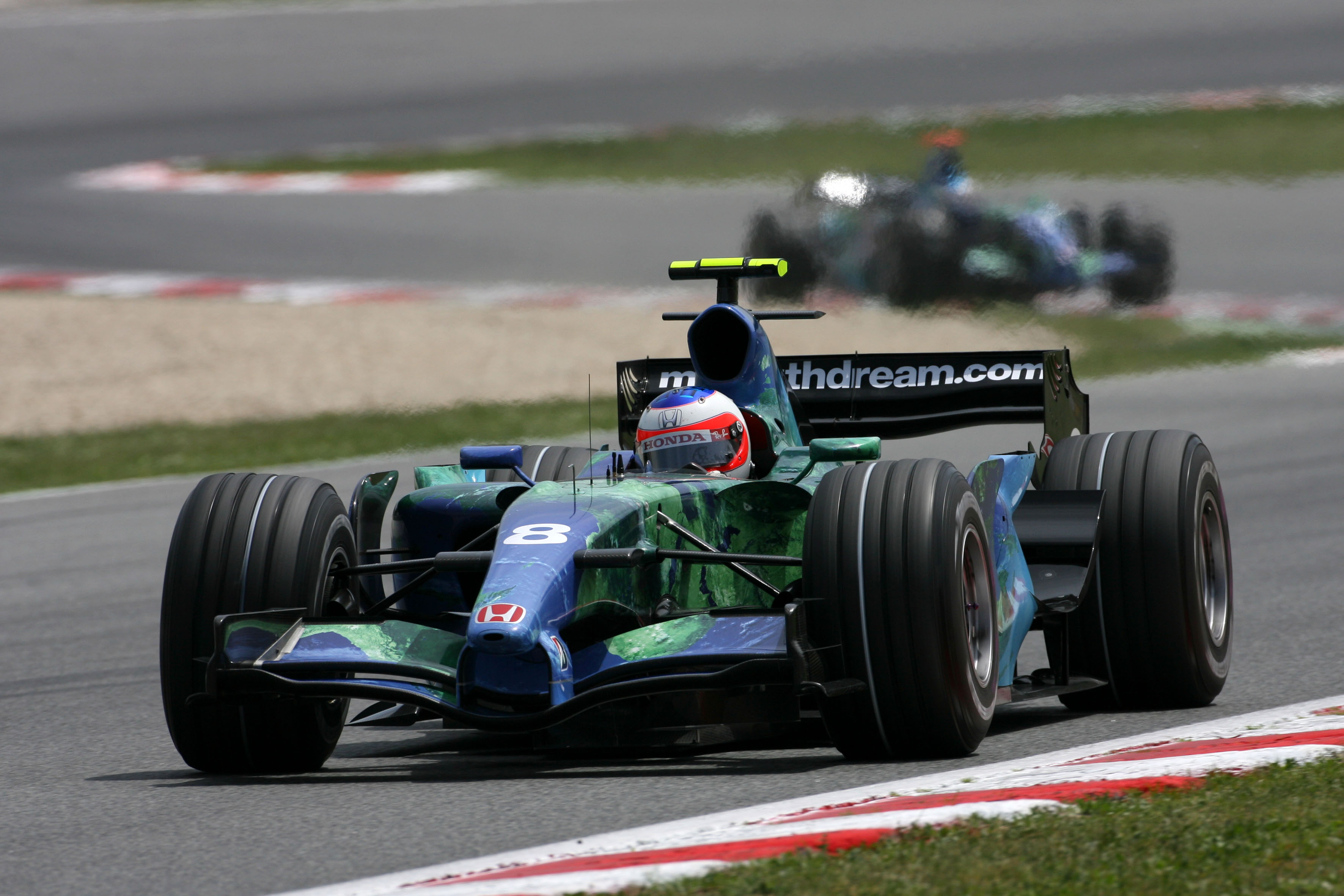
Over the final six races of 2006, Jenson Button outscored every other driver, prompting talk that 2007 would be the year Honda would step up to be a title contender.
The RA107 turned heads at its launch, but that was because of its eye-catching, sponsor-less livery that featured a giant decal of Earth – which the team claimed was a bid to raise environmental awareness, rather than a way to dodge the fact it no longer had a title sponsor.
On track, the car was a disaster. It achieved the dreadful combination of being draggy on the straights but having no downforce in the corners, making it unpredictable to drive. Honda slumped from fourth to eighth in the constructors’ championship, and its tally of six points put it only two ahead of its junior team Super Aguri, which was running its 2006 car.
Super Aguri then had the misfortune to end up with the ’07 Honda for 2008, and the plucky little team folded after just four races of that season due to a lack of funding.
Number 2 – Ferrari F2005, 2005
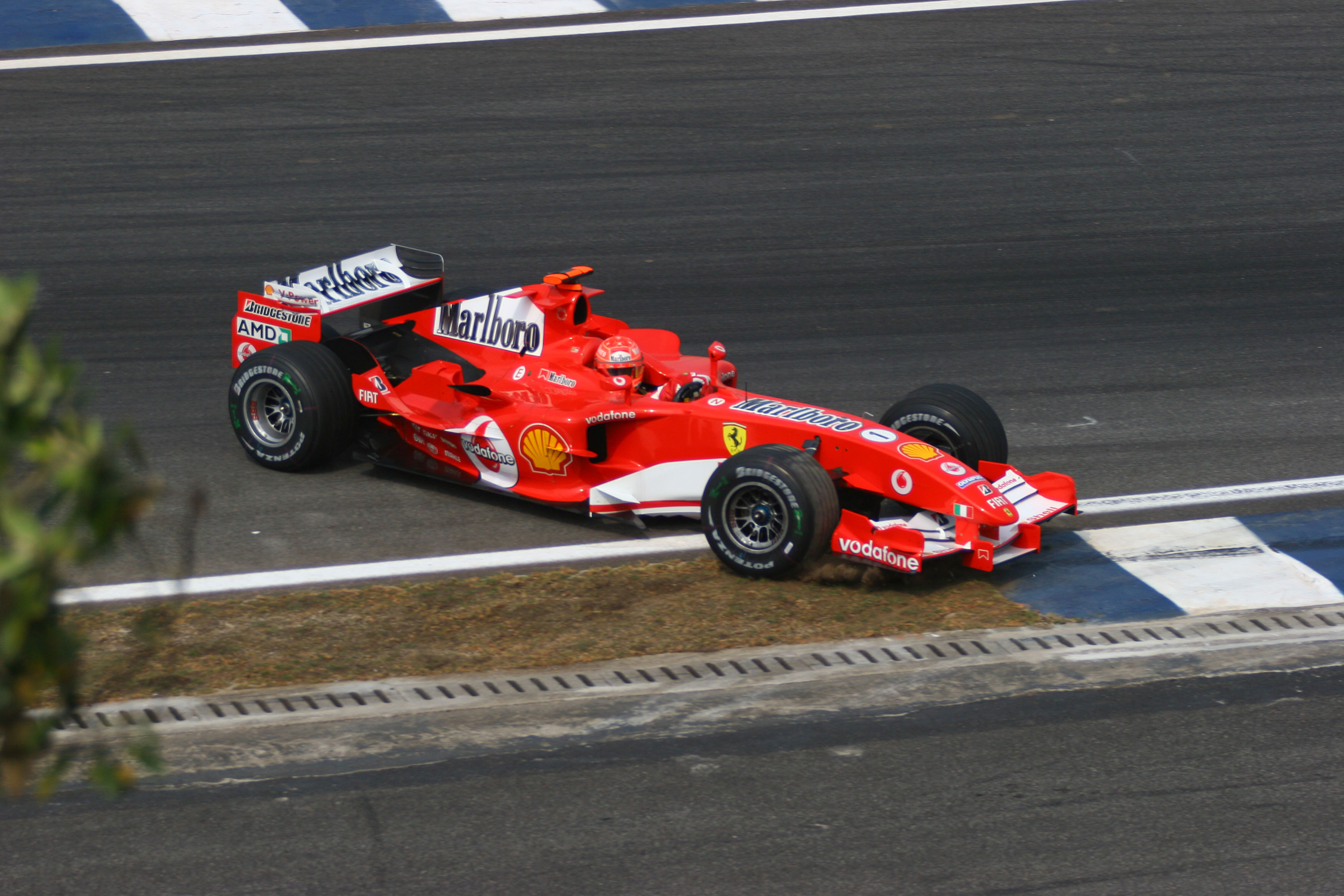
To follow up one of the greatest F1 cars of all time with one that shouldn’t have won a race was a disaster. The F2005 was the car responsible for bringing an end to five years of dominance for Michael Schumacher.
The failing of the F2005 was largely put down to Bridgestone failing to produce a suitable tyre when F1’s rules changed to outlaw in-race tyre changes. Ferrari and Bridgestone had mastered the art of short-stint sprint racing in the early part of the 2000s, and this rule change undid all of that hard work.
But there were other changes in 2005 that also affected an area Ferrari was generating a lot of performance from. New aero rules restricted the diffuser, forcing teams to generate more downforce from its central area. Ferrari’s engine and gearbox design prevented it from opening up the diffuser as much as it would have liked in 2005, so another key part of the F2004’s success was restricted the following season.
The F2005 should have been a winless F1 car, but it avoided that thanks to the controversial US Grand Prix, where Schumacher won a race started by only six cars after the 14 Michelin runners withdrew because of safety fears.
Number 1 – McLaren MP4-18, 2003
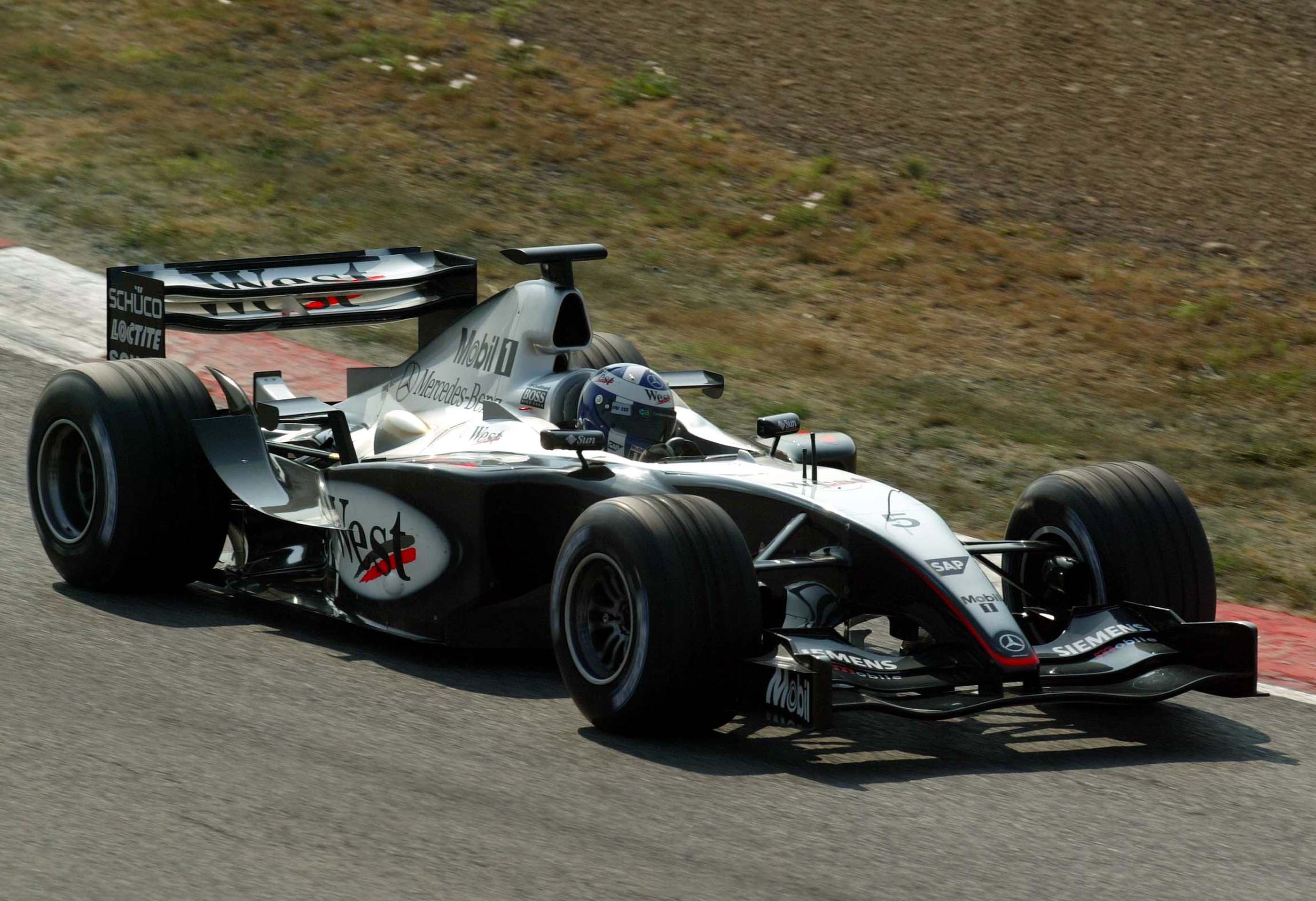
Adrian Newey’s radical MP4-18 looked like it was worth the wait when it was launched once the 2003 season was already up and running. The design was Newey’s first attempt at a lot of the aerodynamic and packaging characteristics he would eventually master at Red Bull, but this McLaren was proof that even the greats can sometimes get it wrong.
The eye-catching tight bodywork around the rear caused reliability problems from the off, meaning the car could barely complete a lap or two without catching fire in the beginning.
McLaren also struggled to pass some of the mandatory crash tests, although it claimed this was because it was pushing weight-saving to the maximum, and any car that passes its crash tests first time is probably too heavy.
While word got out about the car’s reliability problems, McLaren was adamant the MP4-18 was a big step up in performance from its predecessor, which in revised form was keeping Kimi Raikkonen in the championship hunt in 2003.
But that wasn’t the case. The car was slow and unpredictable to drive, and it suffered some huge accidents in testing. Newey discovered this was because of an aerodynamic imbalance, which he felt could be solved by a chassis redesign.
However, he was outvoted in a meeting of McLaren’s senior design personnel, who decided the car could be made to work in its original form.
The MP4-18 is famous for being the car that never raced, but Newey claims it did. McLaren said the car was “the mother” of 2004’s MP4-19, but Newey said in his book the new car was just the MP4-18 with a different sticker on it.
As he predicted, the design was poor through the first part of 2004, and it was only when he finally got his wish to redesign it for a mid-season introduction of a B-spec chassis that McLaren found some performance.
Kimi Raikkonen picked up four podiums with the revised car, winning the Belgian Grand Prix, and McLaren added 45 points over the final eight races of the year to the 22 it scored in the first 10. To quote Newey, “We could have had a decent season if only we’d produced that car in the first place…”


